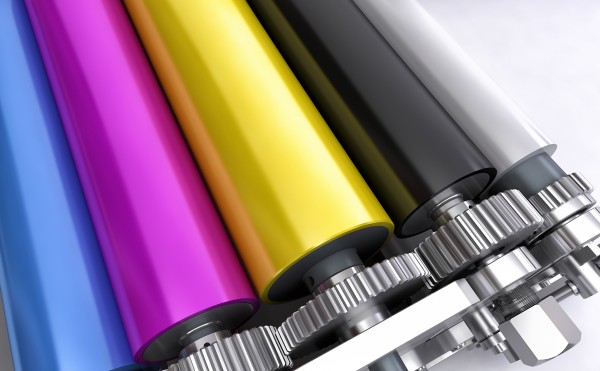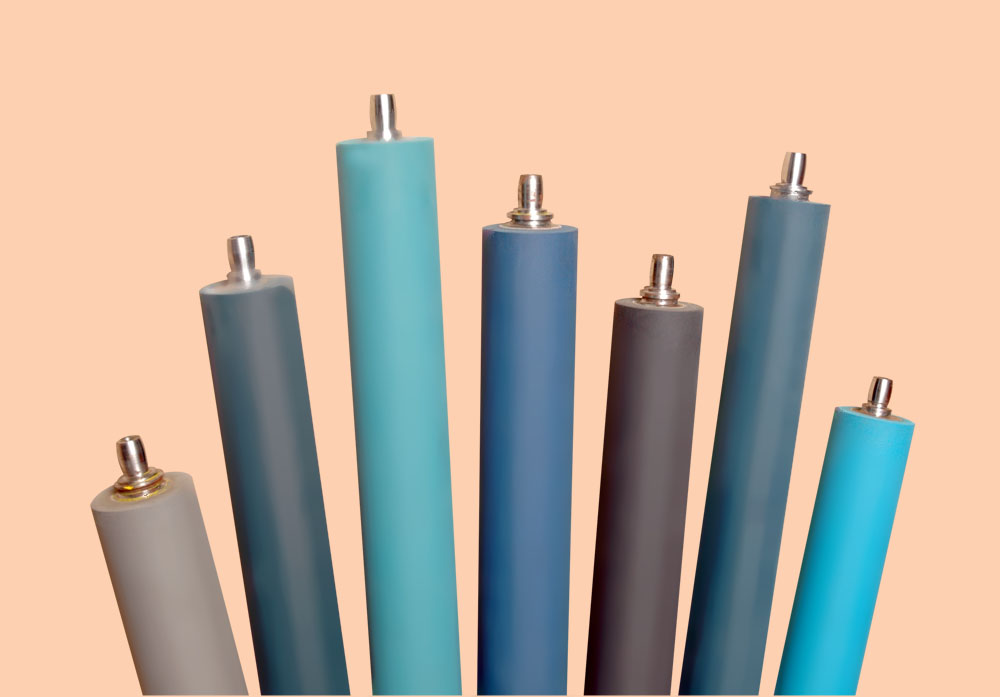Rollers in Offset Printing Machines
Synthetic rubber is used in roller manufacture: a complex mix of natural rubber and various chemicals that obtain their stability and elasticity through the vulcanization process.
It is the raw rubber that gives the rubbery material its basic characteristics.
The vulcanization agents are added to this for the subsequent vulcanization process.
Plasticizers (fluid oils) play a major role as they – along with the extenders and the vulcanization agents – determine the subsequent degree of hardness of the material.
The more plasticizers are added, the softer the rubber after the vulcanization process.
Shore Hardness
The Shore hardness of a roller determined with a Shore meter designates the resistance against penetration of a needle taking the form of either a conic section (Shore A) or a point (Shore D), pressed with a defined force (1 kp) for a period of three seconds against the rubber surface. Soft rollers are measured with Shore A, and hard rollers with Shore D.
Inking rollers must be adjusted to be oil-friendly (or oleophilic).
In an inking system with conventional inks, rollers of Shore A hardness between 30° and 35° are used. For UV inks, rollers with Shore A hardness of 25° and between 40° and 45° are used.
Dampening rollers should be water-friendly (hydrophilic).
For alcohol dampening systems, Shore A hardness of between 25° and 30° is suitable.
In direct dampening systems, hard rubber rollers are used.
More information about roller maintenance and resolving problems

